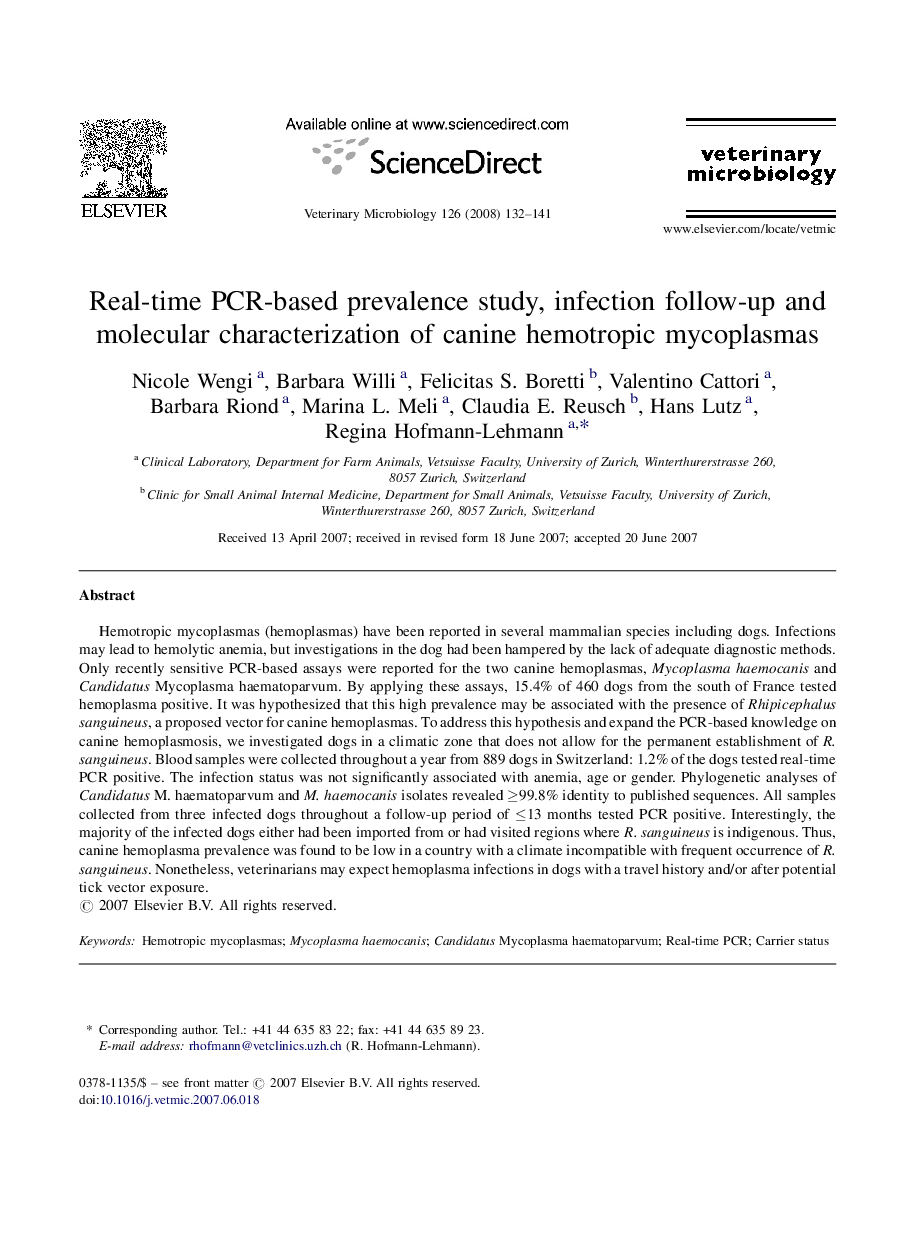| کد مقاله | کد نشریه | سال انتشار | مقاله انگلیسی | نسخه تمام متن |
|---|---|---|---|---|
| 2469028 | 1555445 | 2008 | 10 صفحه PDF | دانلود رایگان |

Hemotropic mycoplasmas (hemoplasmas) have been reported in several mammalian species including dogs. Infections may lead to hemolytic anemia, but investigations in the dog had been hampered by the lack of adequate diagnostic methods. Only recently sensitive PCR-based assays were reported for the two canine hemoplasmas, Mycoplasma haemocanis and Candidatus Mycoplasma haematoparvum. By applying these assays, 15.4% of 460 dogs from the south of France tested hemoplasma positive. It was hypothesized that this high prevalence may be associated with the presence of Rhipicephalus sanguineus, a proposed vector for canine hemoplasmas. To address this hypothesis and expand the PCR-based knowledge on canine hemoplasmosis, we investigated dogs in a climatic zone that does not allow for the permanent establishment of R. sanguineus. Blood samples were collected throughout a year from 889 dogs in Switzerland: 1.2% of the dogs tested real-time PCR positive. The infection status was not significantly associated with anemia, age or gender. Phylogenetic analyses of Candidatus M. haematoparvum and M. haemocanis isolates revealed ≥99.8% identity to published sequences. All samples collected from three infected dogs throughout a follow-up period of ≤13 months tested PCR positive. Interestingly, the majority of the infected dogs either had been imported from or had visited regions where R. sanguineus is indigenous. Thus, canine hemoplasma prevalence was found to be low in a country with a climate incompatible with frequent occurrence of R. sanguineus. Nonetheless, veterinarians may expect hemoplasma infections in dogs with a travel history and/or after potential tick vector exposure.
Journal: Veterinary Microbiology - Volume 126, Issues 1–3, 1 January 2008, Pages 132–141